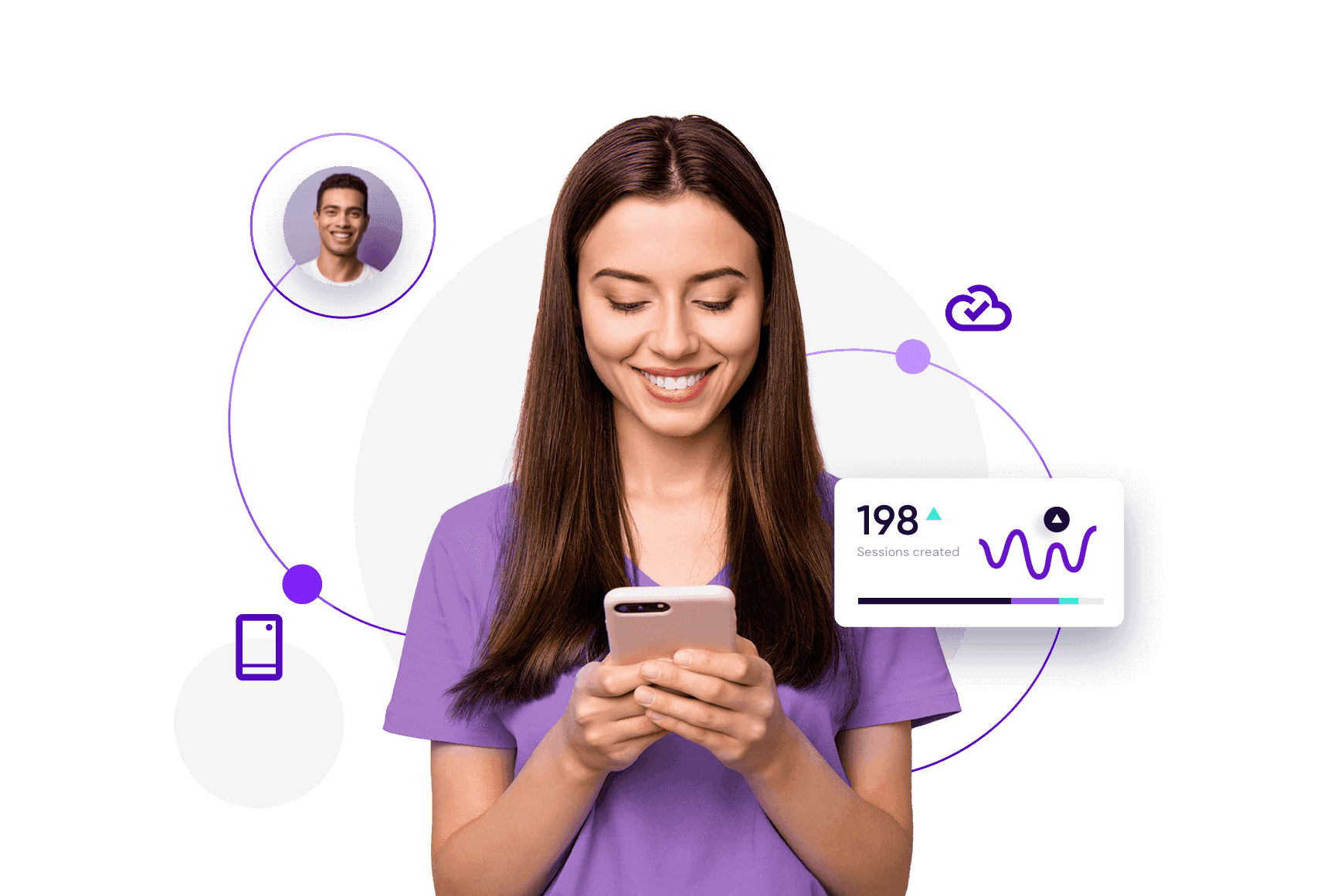How to select the most effective call center software (5 tips and best practices)

By Lídia Dias
0 min read

Running an efficient call center has become an essential process for many businesses striving for success. It’s what we often call “a good problem to have.”
There will come a point when maintaining customer satisfaction will require the ability to handle large call volumes. While this might be a new expense for your company, it also means that you’re becoming more successful. Simply having a room full of contact center agents, however, isn’t going to be enough. You’re going to need call center software in order to properly manage these calls. Unfortunately, not every call center solution is equal.
There are a variety of call center systems available for businesses, but it really comes down to which option can meet your unique needs. Some companies need contact center software that merely directs callers to the appropriate department. Of course, other organizations may prefer systems that improve contact center customer engagement or offer artificial intelligence (AI) and interactive voice response. Whether you need minimal call center software features or an entirely cloud-based system, modern contact center solutions can get the job done.
The following guide will provide everything you need to know about this invaluable software. By the end of this article, you’ll understand how such a solution can benefit your customers, call center agents, and your organization as a whole.
What is a call center system software?
Call center system software is a platform that focuses on streamlining customer service solutions in a contact center environment. There are various types of software that fall under this umbrella, and some platforms even offer several of these tools.
For instance, a basic type of call center software may only offer interactive voice response (IVR)—a system that merely directs calls based on input provided by the caller. However, a more complex solution may include IVR, computer telephony integration, automatic call distribution, and call center monitoring.
These call center systems are meant to fix many of the issues encountered in a traditional call center environment. For instance, instead of having three agents working on mundane tasks (e.g., making payments, updating information), callers can use self-service options and free up agents to handle more complex issues.
The most basic software in contact centers offers benefits, but even more advantages come when you opt for a cloud-based call center system.
Such benefits include greater scalability, reduced costs, increased efficiency, and superior security. Additionally, cloud contact center software offers the opportunity for remote work—which has been shown to increase employee productivity.
Why should I be considering a call center solution?
The benefits of switching to a cloud contact center are many, but it’s really the technology’s improvement over modern systems that stands out. Tech has come a long way since LIFE magazine opened the first call center in the 1950s, but far too many companies use the same dated technology. Such systems typically don’t allow for the integration of customer relationship management (CRM) software, and this means you can’t even handle the basic functions of modern customer service solutions.
Cloud-based call center systems also allow your support teams to focus on service without worrying about hardware issues. While even the cloud requires some form of hardware in your contact center (e.g., modems, routers), there are far fewer components that can experience issues. This means less downtime than traditional legacy systems, and if problems do occur, it’s much easier for tech support teams to identify the underlying cause and get you back online.
Even these impressive advantages over old-school call center solutions don’t come close to covering the best features available when you choose the right contact center software.
5 best features to look for when choosing the right call center software.
Choosing the top call center software doesn’t have to be a burden. You certainly want the best option for your particular demands, but as long as your contact center solution meets a few basic requirements, it should be able to meet your needs and improve operations. These are the top call center software features you should seek out when choosing a solution:
- Integrations
- Implementations
- Call routing and IVR
- Analytics and metrics
- Scalability
1. Integrations.
Even call center systems that handle every potential aspect of customer support calls can’t be standalone solutions. Your business utilizes a variety of different software platforms to improve call center and overall productivity, and it’s essential that all these platforms can integrate seamlessly. Your help desk software, CRM systems, workforce management tools, marketing tools, and even social media platforms would work together in an ideal world. When choosing the best call center software, integrations should be a top concern.
2. Implementation.
Ease of implementation is another essential aspect of any great call center software. With the advanced solutions available, it shouldn’t take more than 1-2 hours to fully implement even the most feature-heavy systems. Ease of implementation is essential since your contact center capabilities may be reduced during this time.
3. Call routing and IVR.
Some executives believe they don’t need call center solutions merely because they have live agents that answer their calls. Unfortunately, this also creates the possibility of putting clients on hold or even missing their calls.
Call routing and interactive voice response (IVR) systems removes this potential issue. The simple fact is that not every caller needs help from a live agent, and even when they do, getting them to the right department doesn’t mean an employee has to transfer them.
The right call center software can take an inbound call and direct it based on caller input. This could be something as simple as having customers “Press 1 for you’re a current patient, press 2 if you’re a provider”. With this technology, your business phone system can handle many simple solutions for your customers—and with smart call routing, you won’t waste time and resources trying to get callers to the right department.
4. Analytics and metrics.
No call center software solution is complete without the ability to measure analytics and metrics. Call center metrics will show you just how well your agents and new system are functioning, and it can identify areas where improvement may be necessary. For instance, if one of your agents has a higher average call time on inbound calls than other employees, you’ll know that it’s time to use the live call monitoring function to see exactly what’s going on.
The ability to track both individual and team metrics is equally important, and this is true for both inbound and outbound call centers. That’s because data is everything in the modern business world. It can help you handle tasks ranging from improving workforce management to making inbound and outbound calls more efficient. If you’re using business phone systems that don’t track metrics and provide analytics, you’re doing your entire organization a disservice.
5. Scalability.
Many businesses choose their call center software based entirely on price. This should certainly be a consideration since selecting the right cloud contact center pricing model will play a major role in your return on investment. However, this doesn’t mean you should simply opt for the cheapest call center management software you can find. That’s because a system with a single low price typically won’t have scalability—and this is an essential aspect of a successful call center.
Scalability refers to the ability of a call center software solution to shrink or grow based on your needs. For instance, imagine a company that deals in beach supplies. Their call volume will obviously be highest during the summer, so why should they pay for summer infrastructure needs during colder months?
Additionally, contact center software options should be able to grow with your company. As you become more successful, you may need to handle higher call volume and even increase focus on outbound campaign management. Scalability offers such possibilities.
Talkdesk cloud contact center solutions for better customer experience.
If you’re looking for the best call center software for your business, you need to look no further than Talkdesk. Our cloud-based contact center software has all of the most important features we’ve just discussed, and our solutions are fully scalable for businesses of all sizes.
Whether you need a basic system to help your two-person customer service team or an entire tech infrastructure to handle thousands of calls per day, we have the systems to meet your needs.
Of course, anyone can promise to offer an amazing call center solution along with the best customer service in the industry. Seeing is believing, and we’re ready to offer a free demo to show you just how focused we are on customer satisfaction—for both our customers and yours. Request a demo by clicking below and learn just how much our customer service solutions and call center software can do for your business.

See Talkdesk in action.
Call center systems FAQs.
What is a call center phone system?
Unlike traditional inbound call centers, a call center phone system is meant to handle a higher volume of calls. This contact center solution achieves this by utilizing a variety of different technologies. For instance, incoming calls may first go through an IIVR system to be properly directed. Help desk software, desktop integration, and automatic call distribution (ACD) are other tools available with contact center software that reduce the burden on agents and increase inbound call capabilities.
What are the advantages of using a cloud-based call center system?
There are a variety of advantages to using a cloud-based solution for call center systems. To start, they’re incredibly easy to set up and don’t require large expenditures on hardware. They also offer reduced costs and greater scalability. Additionally, these systems allow easier remote work, so call center agents can be available for clients even when space constraints make physical attendance difficult. This leads to a better customer experience, and when combined with heightened security, there’s simply no excuse to not use a cloud-based solution.
How do you start using a call center phone system?
The initial process of utilizing your new phone system will depend heavily on the call center software you’re using. Separate vendors may offer very different solutions, and even when you consider only one vendor, their variety of products typically have varying setups and other processes. Talkdesk partners with customers during implementation, following a proven methodology to ensure success. .Regardless of your needs,, Talkdesk will help you get started easily.
Are there limitations to cloud-based call center systems?
Even the best call center software may have certain limitations. Fortunately, many of these can be managed—but it’s still important to recognize their possible existence. First, you may need to worry about legal issues. Local regulations could affect how you operate, but utilizing an established cloud contact center provider can minimize such issues. It’s also possible that communication between employees could suffer if they’re working remotely. This is why utilizing call center systems with effective communication channels is so important.








